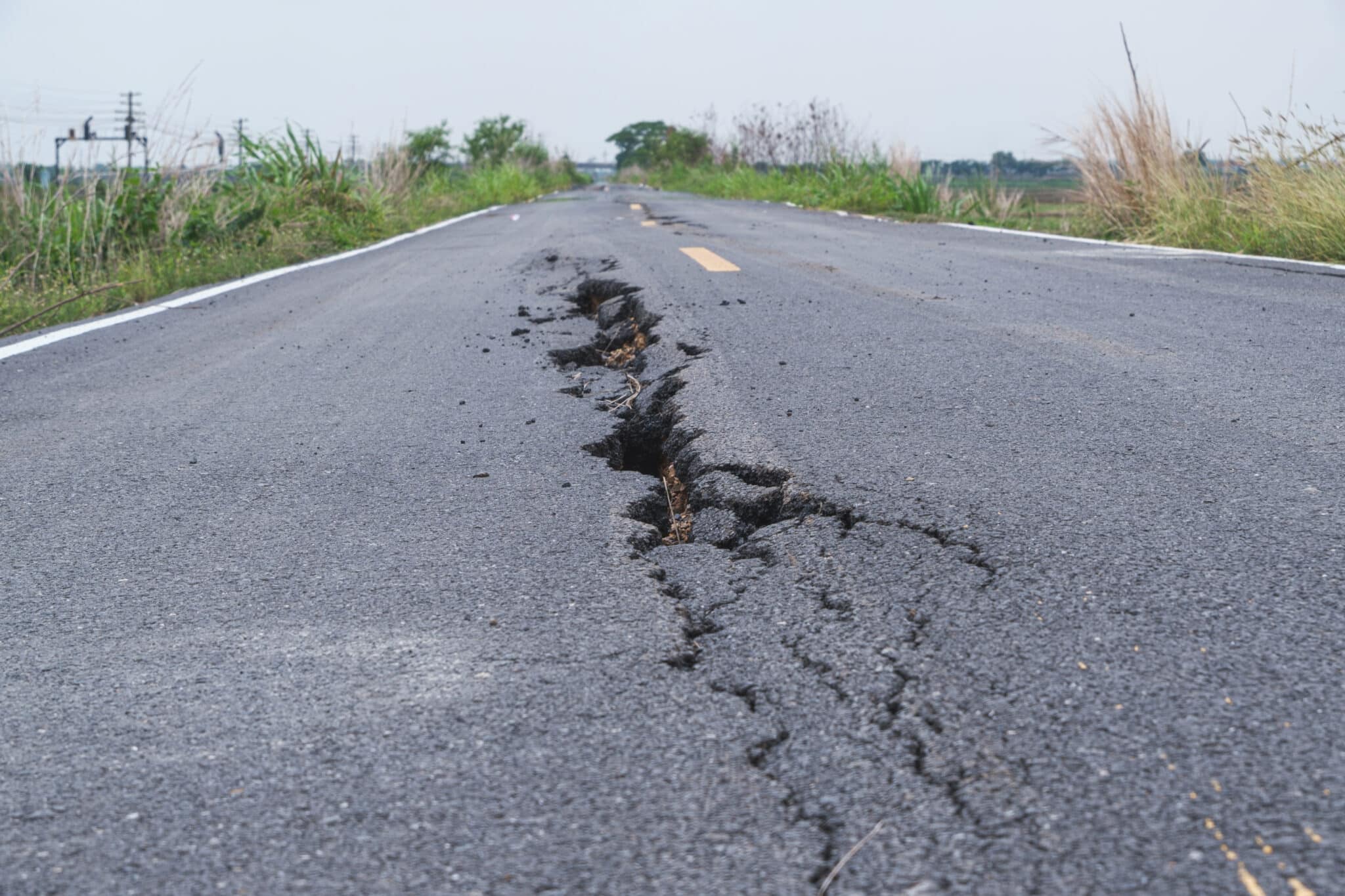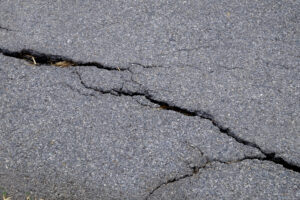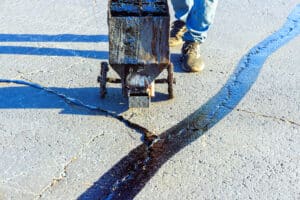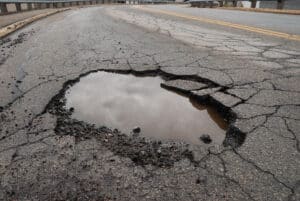Of the 2.6 million miles of paved roads in the United States, more than 94 percent are paved with asphalt. For good reason — the smooth surface of asphalt is extremely durable, long-lasting, and cost-effective to construct and maintain. But it’s not invincible.
Asphalt paving withstands a lot of wear and tear. Heavy vehicle loads, ever-changing weather conditions, poor drainage, and traffic patterns all take their toll on asphalt pavement over time. These factors can create pavement damage that, when left unrepaired, can lead to a short life for your pavement.
We’ve compiled a list of five types of asphalt damage that commonly affect asphalt driveways, roads, and parking lots, what causes them, and most importantly: how to repair them.
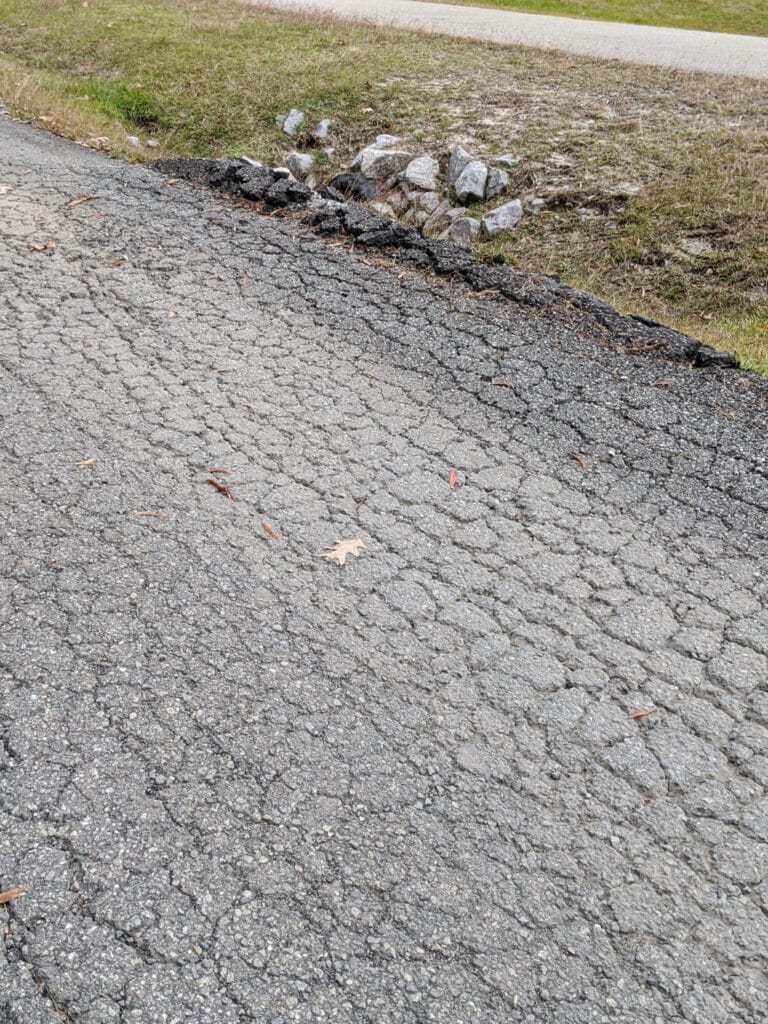
Alligator Cracking
Alligator cracking, also known as fatigue cracking, is one of the most prevalent types of asphalt damage — so named, because of its texture and crack pattern, which resembles reptilian scales. These cracks are composed of many longitudinal and traverse cracks spread over a large area of pavement.
What causes alligator cracking?
There are many potential causes of alligator cracking in an asphalt surface. It can result from poor installation, where the pavement wasn’t compacted sufficiently or laid too thin.
Weight is also a culprit, especially when it comes to parking lots. The impact of heavier vehicles on asphalt can place a lot of pressure on the asphalt, causing cracks to emerge.
How to fix alligator cracking in asphalt?
Crack sealing and seal coating can help temporarily prevent alligator cracks from spreading. Applying these treatments will stop water and debris from entering and worsening the cracks. Until action can be taken it is a good idea to restrict traffic to prevent the weakened asphalt areas from cracking further.
When it comes to alligator cracks, the best action to take is a more permanent one — asphalt repair. Trained asphalt experts can dig below the surface of the cracks and strengthen the foundation with a properly installed sub-base. Once the underlying base is replaced a new layer of asphalt overlay is applied to restore the pavement fully.
Read More: Alligator Cracking Asphalt: What it Means for Property Managers
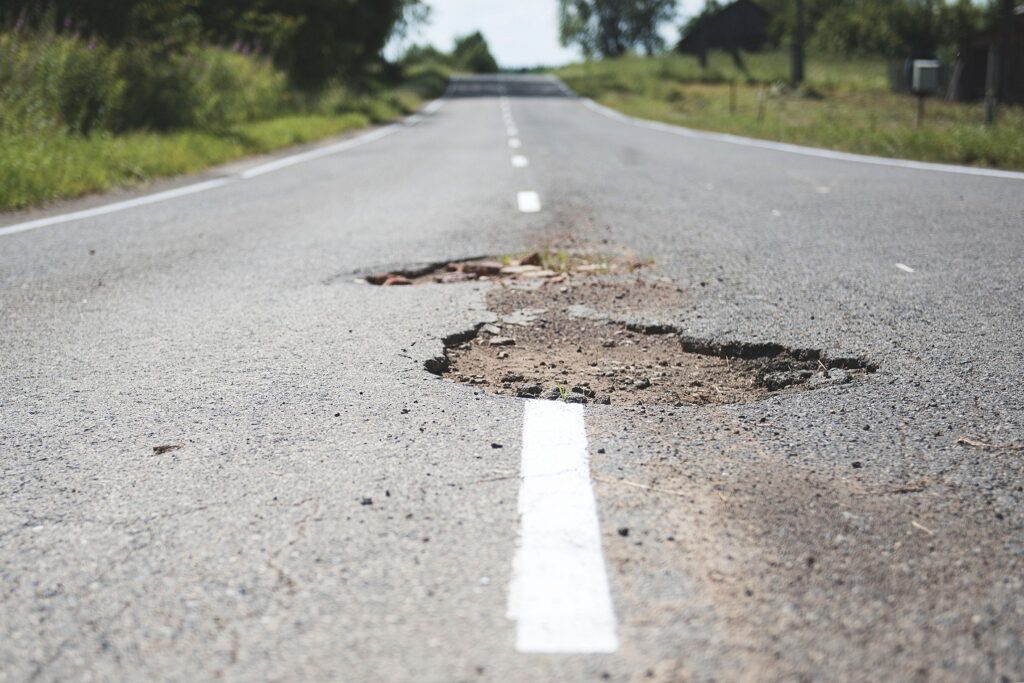
Potholes
Most of us are all too familiar with potholes: bowl-shaped slums in pavement where the asphalt has chipped away. Not only is a pothole a nuisance; it is also a safety hazard that is notorious for damaging vehicles.
What causes potholes?
These holes vary in size and are typically a result of other types of asphalt damage that are left unrepaired. Over time existing damage is worn down further, resulting in chunks of asphalt being dislodged from the asphalt surface.
In some cases, potholes can develop on their own. Weak spots in the base or sub-grade increase the chances that your pavement will experience pothole damage.
Read More: How Do Potholes Form?
How to fix potholes in asphalt?
After removing large rocks and debris, the pothole can be filled with compacted material. The patch will level out the pavement’s surface and provide support to prevent further breakdown.
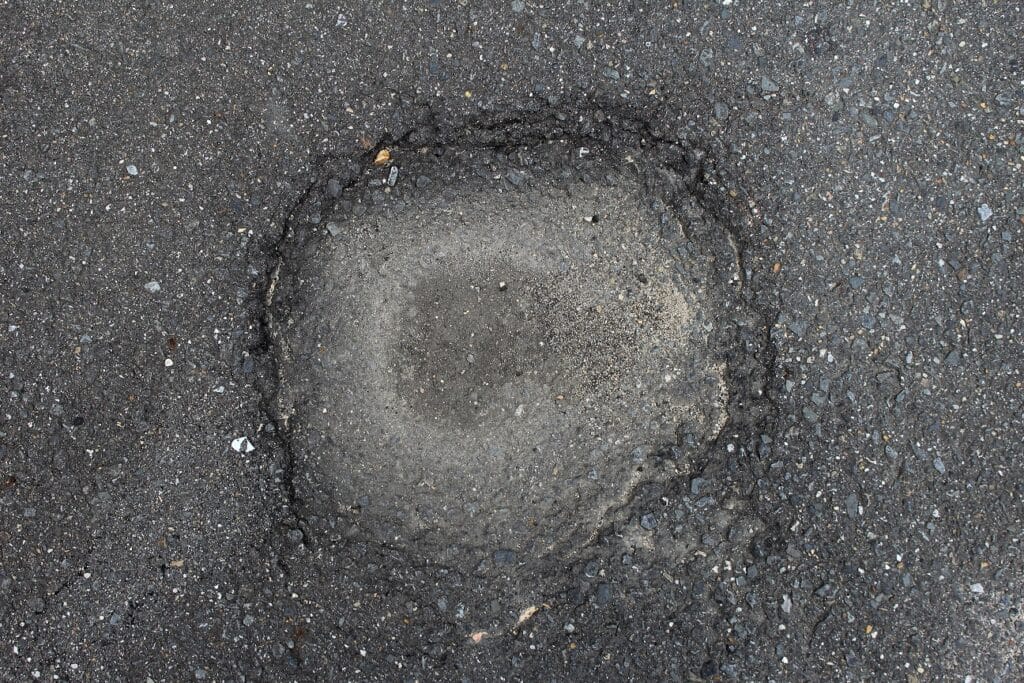
Depressions
Depressions are areas of pavement where the surface is slightly lower than those surrounding it. These areas fill with water, potentially causing vehicles to hydroplane.
What causes asphalt depressions?
Asphalt depressions commonly develop in one of two ways: either from frost heave (ice lenses that develop beneath the pavement) or from compacted that was poorly compacted during application.
How to fix depressions in asphalt?
Sometimes an asphalt depression can be easily repaired with a patch. In other cases, where the depression developed as a result of issues in the sub-grade, the affected pavement will need to be removed and replaced completely.
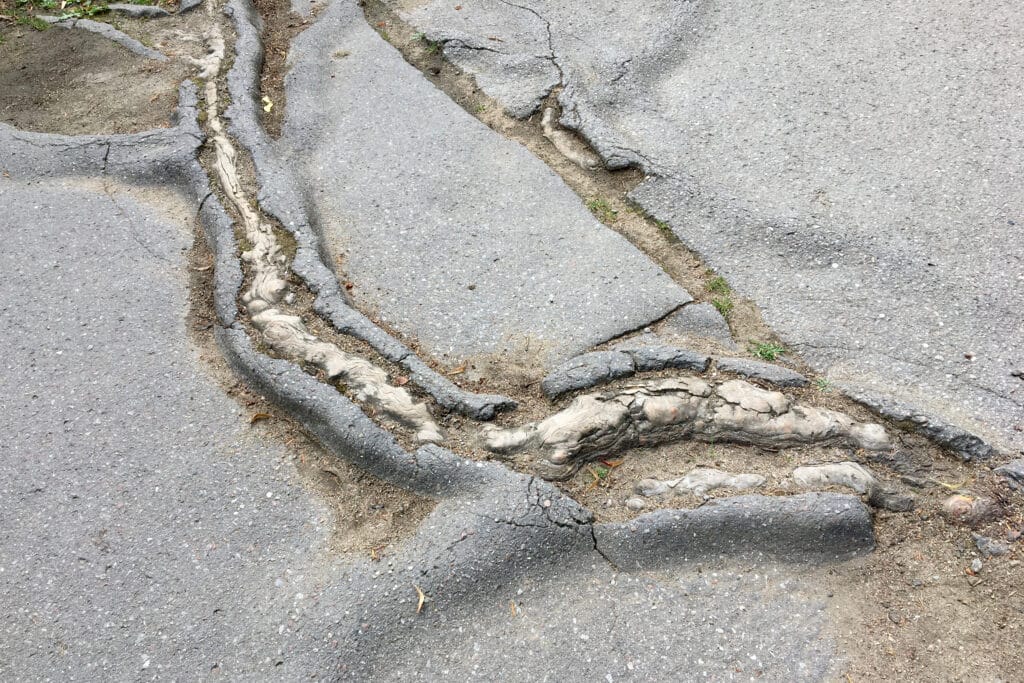
Upheaval
Asphalt upheaval is caused when elements below the asphalt surface cause the soil underneath it to expand. The pressure from this movement not only leaves open space where water and moisture can enter the soil and freeze. As a result of moisture and freezing, the asphalt will often crack and become displaced.
What causes asphalt upheaval?
Growing tree roots, expansive soils (that swell when moisture is introduced), and frost heave are all common causes of asphalt upheaval.
How to fix asphalt upheaval?
Because issues with asphalt upheaval stem in the pavement sub-grade, treatments like crack seal and seal coating are not sufficient. The best way to repair upheaval is to dig out the affected area of the pavement and base then replace with a full patch.
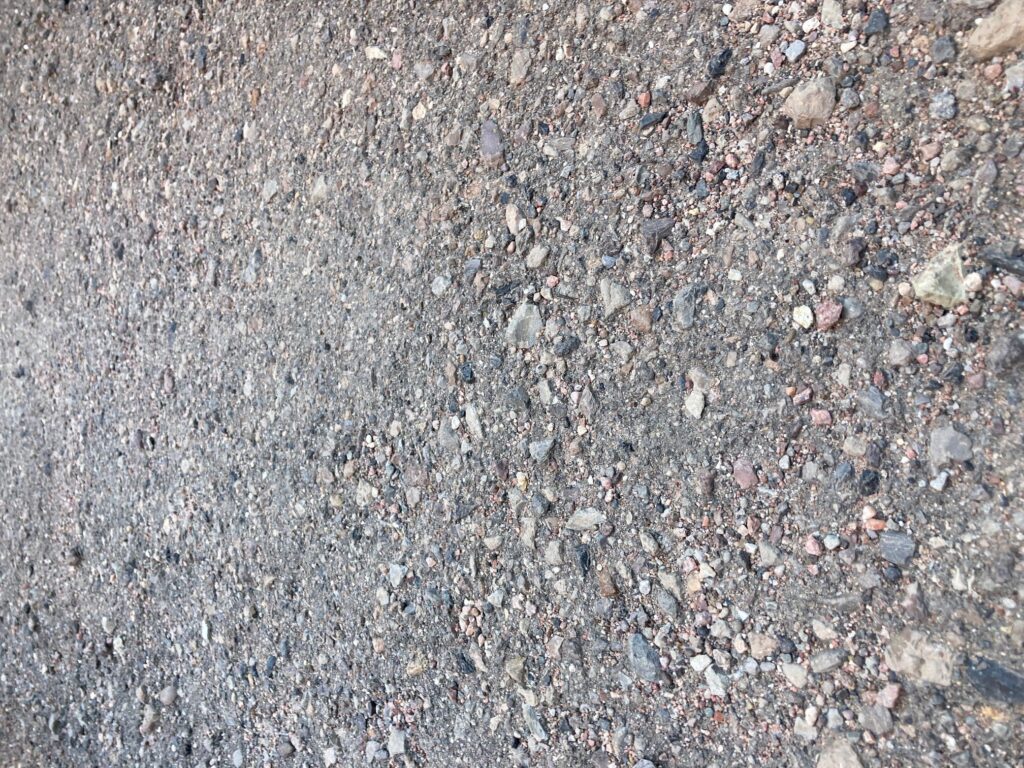
Raveling
Raveling refers to the breakdown of aggregate materials (such as sand, stone, and gravel) from within the asphalt mix. These materials become dislodged, resulting in hazardous loose gravel. Additionally, the integrity of the pavement suffers. The asphalt becomes weaker from losing pieces of the material it’s composed of.
What causes asphalt raveling?
Naturally, oils in asphalt are oxidized and asphalt binder becomes weaker over time as it breaks down from its asphalt mixture. Additionally, heavy traffic, inclement weather, and a low-quality asphalt application can all contribute to asphalt raveling. Heavy wear and tear on the asphalt can dislodge the aggregate materials and once the process has started it progresses quickly. Gravel and sand moving against the exposed pavement create a rough surface that continues to break down over time.
How to fix raveling in asphalt?
Depending on the severity of the raveling, a construction team can remove and replace the damaged pavement. Following repair of the afflicted areas, an overlay is applied to further protect from future raveling.
Asphalt pavement provides incredible value. It provides an even terrain for vehicles, a surface where road markers can be displayed clearly, and melts away snow and ice more rapidly than other pavement types. Asphalt is built to last 15-20 years, but the only way to make sure it truly lasts is with regular upkeep and repairs.
Read More: What is Asphalt Raveling? And What to Do About It.
More Types of Asphalt Damage
These are just a few examples of pavement distress. There are many types of damage that can happen to an asphalt driveway, parking lot, or road surface. Here are a few more examples:
- Block cracks — Typically caused by asphalt shrinkage due to temperature cycles, block cracking presents as a series of large rectangular cracks, with blocks larger than one foot.
- Edge cracks – Longitudinal cracks forming near the edge of the pavement surface, due to poor underlying support.
- Longitudinal cracks — Longitudinal cracking is caused by asphalt shrinkage, underlying cracks, and poor consturction. This type of cracking appears parallel to the center line of the pavement.
- Transverse cracks — Transverse cracking occurs perpendicular to the pavement’s center line and is caused by asphalt shrinkage or reflection cracking.
- Reflection cracks — Forming due to pavement movement, reflection cracking forms over joints or in a paving overlay.
- Slippage cracks — Crescent-shaped cracks that form due to vehicles turning or braking. This happens due to poor binding between pavement layers or a low-strength asphalt mixture.
Whether it is asphalt cracks or a pothole, it’s important to look for asphalt damage and take action to repair it early on. Superior Asphalt, LC is your local asphalt expert. Contact us for help developing an asphalt maintenance schedule to ensure that your asphalt is always taken care of.

